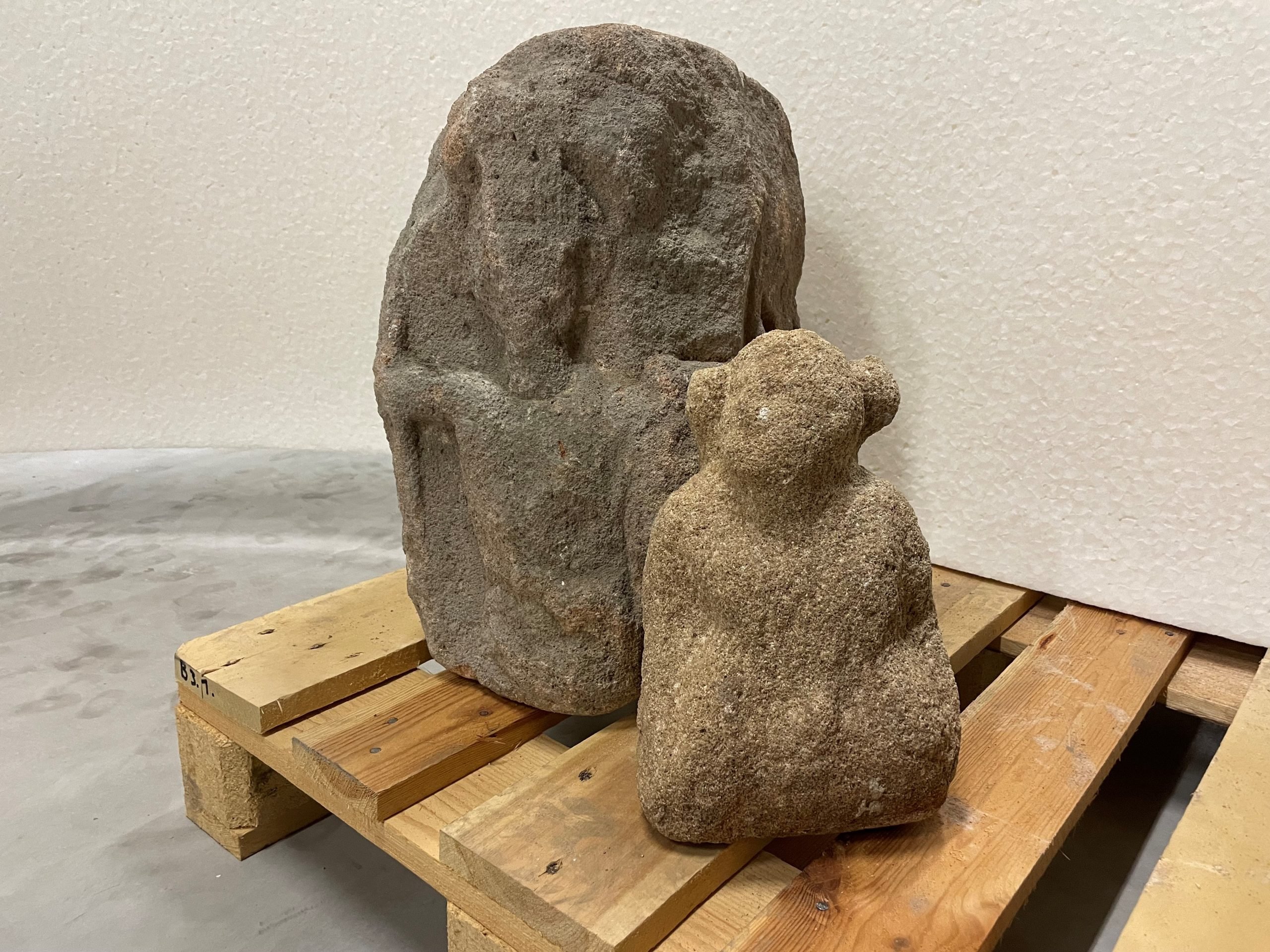
Due diligence in Stuttgart recently unearthed a stone sculpture that was actually part of an ancient Roman monument discovered at the same site more than a century ago. For the past few months, the State Office for Monument Preservation (LAD) has overseen excavations at a plot that had been tapped for the expansion of a local school. From 100 to 150 C.E., this very location hosted an ancient Roman fort, which became a larger settlement 100 years later. Those preliminary excavations paused, a release said, when an employee from the contractor ArchaeoBW spotted “a rather inconspicuous, mud-smeared sandstone.”
“The find turned out to be a 30 centimeter-tall kneeling figure with a human head,” the release says. “You can see how her arms rest on the sides of her upper body and her hands rest on her hips and legs.” It may take some imagination to fully grasp, but the chimera’s lower half shifts from a human torso to a serpent’s tail.
On site at the excavation in Bad Cannstatt, the excavation team from ArchaeoBW (left) and the team from the Provincial Roman Archeology Department from the Württemberg State Museum (right). In the middle, the team from the State Monuments Office in the Stuttgart Regional Council with the new find. Photo: ArchaeoBW, Ch. Hoyer.
Fortunately, experts have ample historical context to understand the find. “The figure is a hybrid creature of the Roman-Germanic world of gods, a so-called ‘giant,’” said senior LAD archaeologist Andrea Thiel. Comparative analyses found that this figure hails from a larger Jupiter column—a type of religious monument that was particularly prevalent throughout Roman Germania during the 2nd and 3rd centuries.
Jupiter columns “combine classical antiquity with probably Germanic beliefs,” Thiel explained. “Jupiter, throwing lightning bolts, rides on his horse over a figure crouching on the ground, usually naked and bearded, as can be seen, for example, in a group from Hausen an der Zaber in the Heilbronn district.” This specific example presented Jupiter as nature’s master, Thiel added.
Andreas Thiel with the stone figure (Photo: LAD/G. Dakmaz)
“Every archaeologist is happy when a beautiful find is made,” he said. But, when the staff at the nearby Württemberg State Museum caught wind of the discovery, they remembered that most Jupiter columns included a Four Gods Stone at their base. “In the depot of the Württemberg State Museum there is a badly damaged Four Gods Stone with depictions of the Roman deities Mercury, Juno, Hercules and Minerva,” said the museum’s head of archaeology, Astrid Fendt. Mercury, Juno, and Minerva formed the Capitoline Triad of Gods. Although Juno wasn’t a fan of Hercules, the Hapsburg family did consider him a legitimate ancestor.
The museum’s Four Gods Stone surfaced in 1908 near a well on the edge of the same lot being excavated. “At the time, a large barracks was being built,” representatives for the city said. The find instigated a more exhaustive excavation. Thiel said that the figure they just found “could also have been lying there, but it probably escaped our colleagues at the time, which is not surprising.”
Crews will continue scouring the site for further artifacts through the end of May. “By then, the entire construction window will have been examined and all finds will have been recovered,” the city said. “We hope that it will soon be possible to show the little giant together with the relief of the gods in a special exhibition.”